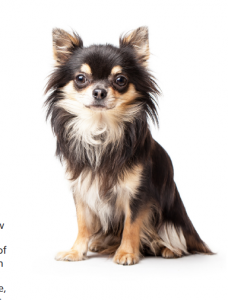Most people have their own version of the fountain of youth. For health buffs, it’s the marathon they run, or their countless hours of working out in the gym. For my friend collecting classic cars, it is endless hours cleaning every nook and cranny of his vintage race cars.

Simply put, for animal lovers, it is their day surrounded by their pets. People enjoy life to the fullest. Specially, when their passion gets fulfilled through winning and accomplishing what they set out to do. While for most people, sitting and watching dog shows gets to be boring after two to three hours watching dogs being paraded and judged, for the daring few, its a lifetime achievement for their dogs to get the various titles of Champion, Grand Champion, Sire of Merit, and many other prestigious but hard-to-get titles. Someone asked me, “So how do you make a champion dog?”
For a lot of my friends in PCCI, it has been a journey of more than forty years. I saw them start in the mid-70s, even before we finished college. To this lot, who continue to pour their hearts and minds into it, I take my hat off and bow to their commitment and fortitude.

Obviously the reward is how they have kept themselves young-looking and, more importantly, feeling like kids every time they hit the show ring and bring home awards. There is Dr. Raymond Lo of the Pekingese dog breed. Among the Pomeranians, we look no further than Chairman Basil Yap, who I always bump into in dog shows in San Francisco’s Cow Palace.
They are prime examples of pet lovers who have stayed young because of the hard work they pour into the passion of producing champion dogs. There are many others around—too many to name, in fact—but one thing is for sure: it does not only require resources, but more importantly patience and hard work. I have been able to ‘finish’ two Chihuahuas to become champions from 2007 to 2009.
Ace and Guapo first came from outstanding show lines. While Ace finished his championship points in fourth successive shows, it took me close to a year and about twelve shows to get Guapo’s title. The last point was the hardest and took the longest time to get. I began my quest in the seventies with German Shepherds but did not get very far as I had to go to school abroad.

Back in the early 90s, I contented myself tagging along with Joey Lim Tan, who was campaigning champion boxers. Overwhelmed by the financial commitments necessary to pay handlers, kennel keepers, and dog food, I decided just to own great pet dogs while I also started to own arowanas, ringnecks, chameleons, tortoises, and guinea pigs. There was a time Chihuahuas were making a comeback in the ring and the economies of scale were going in their favor.
With three of my friends, we even imported two stud dogs from the US. To answer my friend today on how to produce champion dogs, I should say it is a lifetime commitment to work and invest, but it is equally fulfilling that you stay in the game for a very long time and enjoy it. While I saw my friends age during the last Philippine Circuit Show, none of they complained of the gruelling three fourteen-hour days they stayed in Araneta Colesium; win or lose, it was still happy and joyful to see the world’s best dogs competing in Manila for the many titles each dog was pursuing.

I cannot forget the exuberance of one Korean winner who ordered four champagne bottles for each of the fifteen tables during the fellowship dinner on the last day of the Manila tournament. Youthful excitement is the only way I can describe his expensive action. But besides dog shows and champions, I wake up to my own youthful surroundings each day of the last fifty years. Whether it is breeding discus, goldfish, guppies, and Siamese fighting fish, the hours spent are endless and exciting.
When I learned tortoise breeding and incubation methods from my friend Egbert, it was not unusual to spend four to five hours each night discussing with vets and fellow hobbyists how things are done in nutrition, habitat, propagation and incubation.

Needless to say, the 150 days to incubate reptile eggs taught me patience and understanding. While caring for Chihuahuas, I fell for the beautiful ringneck mutations of blue, lutino, and grays. Needless to say when I got hold of olives, turquoise, and albinos, it did not take a long time for me to finally produce a creamino—in fact, four of them.
Today, I enjoy my visits to my friend Elmer’s ringneck park where I see violets, pieds, saddlebacks, and opalines. I no longer breed birds but the joy of knowing they are just a short drive away excites me no end. Elmer has gifted me with a few African lovebirds of high mutation for old times’ sake. Unfortunately, having a new boy to manage all my pets does not allow for successful bird propagation at this point. Do my pets follow certain seasons?

I think they just change over time between eight to ten years for each period. While most dog show aficionados never change pet preference, for some like me, the cycle is part of the fulfilment as there are always new things each period. I believe this is also true for those who do not have much financial firepower to commit to particular pets at a time. Today it’s back to Asian arowanas for me. From 2003 to 2007, I accumulated 23 arowanas, all in individual tanks. I tried my hand at community tanks, thus ending up with two eight-foot tanks. Recently, I have seen the podariums of Arowana Kingdom and other aro keepers, but sadly, as I still have not gotten to build my dream koi pond, today I content myself just keeping four super reds in various stages of brilliance and my old time favorite crossback that is thirty inches long.
Breeding German shepherds and the designer dogs are still pretty much a staple. This is because my daughters have now taken after me and my youngest has been proclaiming her dreams of reviving my zoo when she gets older.

I still get a kick everytime a bunch of preschoolers visits and goes through my menagerie of pets. It is true that everything we learned about life, we learned in kindergarten: kindness, passion, patience, and love. All of these I see everyday. I greet my pet Alexandrine Alex and watch while the dozens of bantam chickens I have feed on the birdseed scattered below his cage in the garden. I check on the tortoises in their various stages of growth and incubation.
Most of all, I enjoy the variety of feeds for the five Asian aros and stingrays running around with black bars, emperor cichlids, albino pacus, and llamaxes.They are what gets me up in the morning and puts me to bed. I have fallen in love with them and stayed in love. It determines my day, what I read and what amazes me. Their death breaks my heart and through a lot of them, I have met and known many friends. If this is not the fountain of youth, I don’t know what is!!!
This appeared as “Feeling Young and Staying Young” in Animal Scene’s April 2016 issue.






